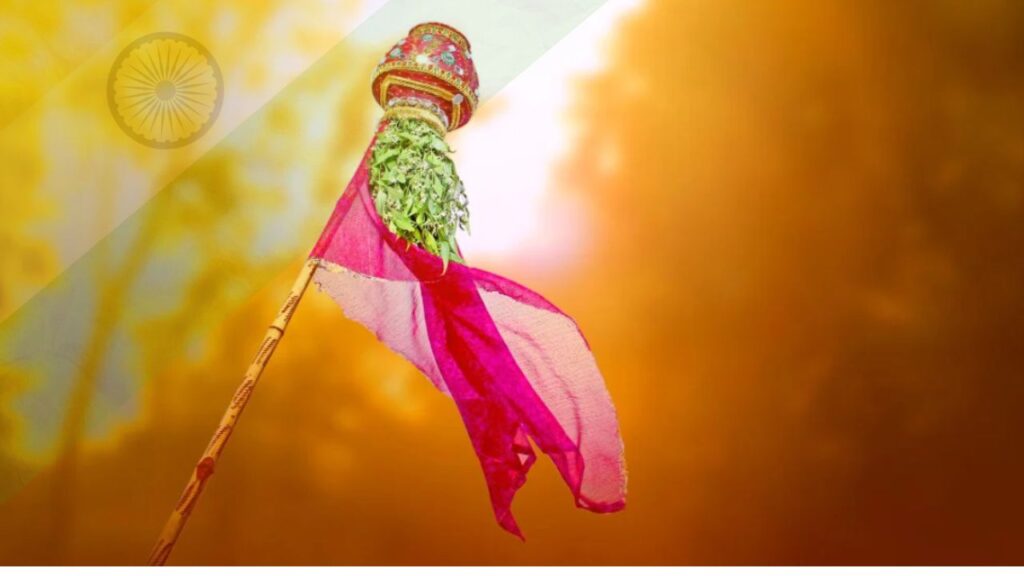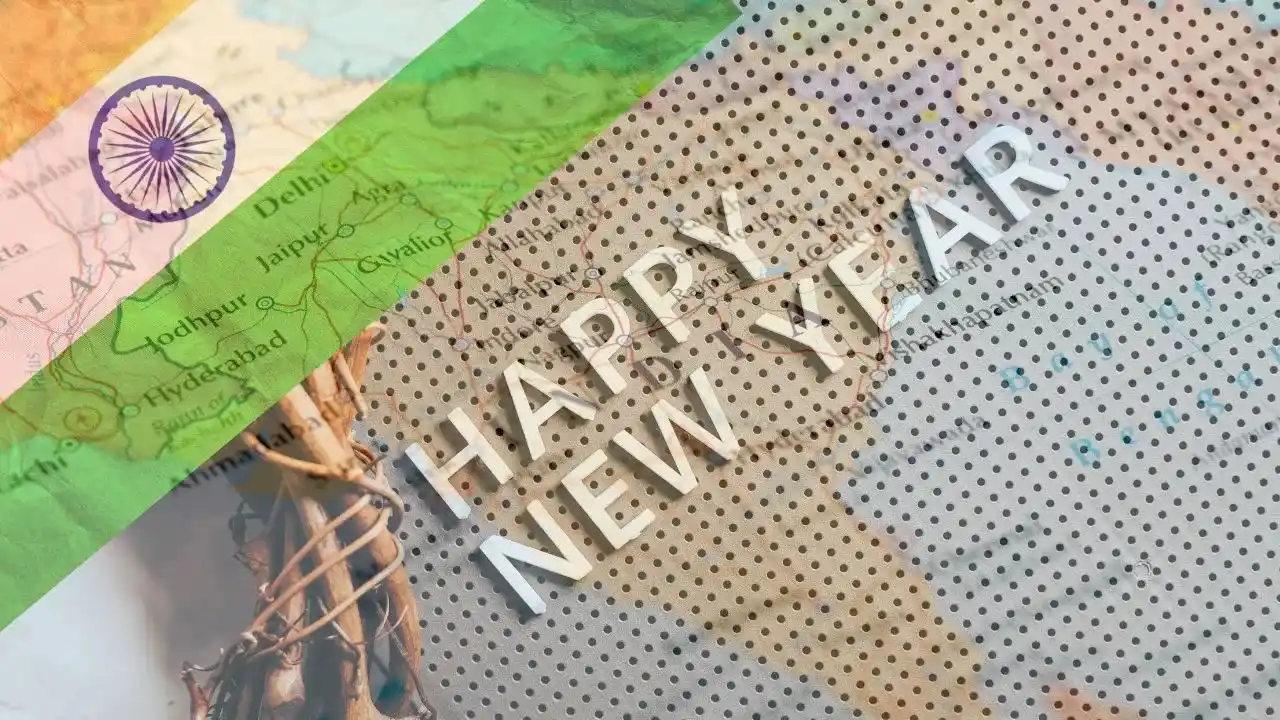India, with its vibrant mosaic of cultures, languages, and traditions, doesn’t have a single “New Year” celebrated uniformly across the nation. Instead, the Indian New Year is a collection of regional festivals, each rooted in ancient calendars and customs, marking the beginning of a new cycle. India, a land of rich cultural heritage, doesn’t celebrate New Year just once a year. Unlike the globally recognized January 1st celebration, India marks the New Year on different dates across regions, based on various calendars — primarily the Hindu lunisolar calendar.
These celebrations usually occur between March and April, depending on the regional customs. These celebrations, rich in diversity, are typically observed between March and April, though the exact dates vary based on lunar and solar calendars. Yet, despite their significance, many outside India—and even some within—remain unaware of these festivals, overshadowed by the global prominence of the Gregorian New Year on 1st January.
Table of Contents
When Is the Indian New Year Celebrated?
The Indian New Year typically falls between March 21st and April 21st, aligning with the arrival of spring and the harvest season. However, it varies slightly each year because it is based on the lunar or solar calendar.
Here’s a quick look at the Indian New Year celebrations across states:
| Festival Name | Region | Approximate Date | Calendar Followed |
|---|---|---|---|
| Gudi Padwa | Maharashtra | March–April | Lunisolar (Hindu) |
| Ugadi | Andhra Pradesh, Karnataka, Telangana | March–April | Lunisolar |
| Bihu (Rongali) | Assam | April 14–15 | Solar |
| Pohela Boishakh | West Bengal | April 14–15 | Solar (Bengali calendar) |
| Vishu | Kerala | April 14 | Solar (Malayalam calendar) |
| Puthandu | Tamil Nadu | April 14 | Solar (Tamil calendar) |
| Cheti Chand | Sindhi Community | March–April | Lunisolar |
| Navreh | Kashmir | March–April | Lunisolar |
| Baisakhi | Punjab | April 13–14 | Solar |
Unlike the fixed date of January 1, the Indian New Year is celebrated under different names across regions, typically falling between mid-March and mid-April. Some of the most prominent festivals include:

- Ugadi/Gudi Padwa: Celebrated in Karnataka, Andhra Pradesh, Telangana, and Maharashtra, Ugadi (or Yugadi) and Gudi Padwa mark the start of the lunisolar calendar. They usually occur in late March or early April, coinciding with the first day of the Chaitra month. In 2025, Ugadi is expected around March 30.
- Baisakhi: Observed in Punjab and northern India, Baisakhi, around April 13 or 14, celebrates the harvest season and the Sikh New Year, tied to the solar calendar.
- Puthandu: Tamil Nadu’s New Year, Puthandu, falls around April 14, marking the first day of the Tamil month Chithirai.
- Vishu: In Kerala, Vishu, also around April 14, is a time for family gatherings and the auspicious “Vishukkani,” a display of prosperity.
- Bohag Bihu: Assam’s Bihu, celebrated around mid-April, heralds the Assamese New Year with vibrant dances and feasts.
These dates align with astronomical events like the spring equinox or the lunar cycle, reflecting India’s deep connection to nature and cosmology. For instance, the Hindu lunisolar calendar determines Ugadi, while the solar calendar fixes Baisakhi and Puthandu around April 14.
Rituals and Significance
Each festival carries unique traditions, yet common threads bind them—renewal, gratitude, and hope. Families clean homes, wear new clothes, and prepare special dishes like mango pachadi for Ugadi, symbolizing life’s mix of flavors. Gudi Padwa sees households hoist a “gudi” (a decorated pole) to ward off evil, while Baisakhi is marked by spirited bhangra dances and visits to gurudwaras. Vishu’s Vishukkani, arranged the night before, ensures the first sight of the year is one of abundance.
These celebrations aren’t just cultural; they’re spiritual. Rooted in Hindu, Sikh, and regional philosophies, they emphasize cycles of time, karma, and cosmic order. For instance, Ugadi’s name derives from “Yuga Adi” (new era), reflecting a fresh start in the eternal wheel of time.
Why Isn’t It Widely Known?
Despite their vibrancy, Indian New Year festivals remain less recognized globally and even within India’s urban pockets. Several factors contribute:
- Diversity and Regionality: With no single “Indian New Year,” the multiplicity of festivals—each tied to specific communities—lacks the unified branding of January 1. A Keralite may not celebrate Ugadi, just as a Maharashtrian may not observe Puthandu, making it harder for outsiders to grasp the concept as a singular event.
- Colonial Legacy: The British colonial era entrenched the Gregorian calendar for official purposes, relegating traditional calendars to cultural spheres. Post-independence, January 1 became India’s administrative New Year, overshadowing regional festivals in global perception.
- Globalization’s Influence: The dominance of the Gregorian calendar in media, commerce, and international discourse has made January 1 the default “New Year.” Urban India, increasingly globalized, often prioritizes New Year’s Eve parties over traditional celebrations, especially among younger generations.
- Lack of National Holiday Status: Unlike Diwali or Holi, most Indian New Year festivals are regional holidays, not national ones. This limits their visibility, as work and school schedules often proceed uninterrupted in other states.
- Calendar Complexity: The reliance on lunar and solar calendars means dates shift annually, unlike the fixed January 1. This fluidity can confuse those unfamiliar with the system, reducing the festivals’ prominence in a world accustomed to standardized dates.
Bridging the Awareness Gap
The Indian New Year’s relative obscurity doesn’t diminish its cultural wealth. Efforts to raise awareness—like festivals being showcased in Indian diaspora events or through social media—are gaining traction. For instance, posts on X highlight Ugadi and Baisakhi celebrations, though they often compete with louder January 1 narratives.
To truly appreciate the Indian New Year, one must embrace its pluralism. It’s not a single day but a season of beginnings, each festival a thread in India’s cultural fabric. By learning about these traditions—perhaps tasting Ugadi’s pachadi or witnessing Bihu’s dances—people can connect with a heritage that celebrates time itself.
Conclusion
The Indian New Year, celebrated between March and April, is a testament to India’s diversity, tying communities to their roots through festivals like Ugadi, Baisakhi, and Vishu. Yet, its regional nature, colonial history, and the global sway of January 1 keep it under the radar. As India balances tradition with modernity, these festivals deserve a spotlight, inviting the world to join in their timeless renewal.
The Indian New Year is not a single-day celebration but a mosaic of vibrant festivals, each representing the essence of India’s cultural diversity. While not celebrated on a common day nationwide, these festivals signify new beginnings, prosperity, and gratitude.
As India continues to evolve, there is a growing need to recognize and appreciate these regional festivals at a national and global level. After all, they are not just about changing calendars — they are about preserving centuries-old traditions and celebrating the spirit of life.
Sure! Here’s a well-structured article about the Indian New Year, including when it’s celebrated and why many people may not be aware of it:

